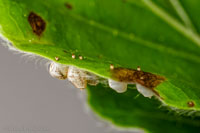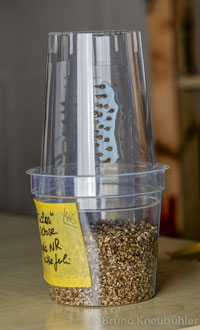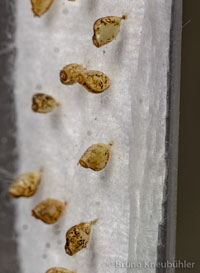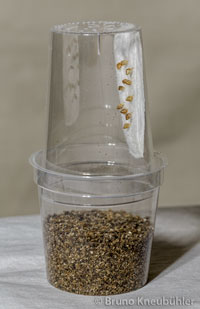A simple, near-natural incubation technique for phasmid species which stick their eggs into a substratum like leaves, bark or twigs. Species groups with this egg-laying behaviour are for example Asceles, Loxopsis, Paraloxopsis. Eggs of such species have a needle-like structure at the rear end, which makes it possible to pin them like a needle. These are eggs of Asceles sp. "Da Krong", with the pin-like structure to the left:


This egg-laying technique is very graphically depicted is this image with eggs of Asceles sp. "Koh Chang". The pin-like structure goes right through the leaf....

At times, such eggs have to be removed by the breeder and kept for incubation in a different location. For this situation we have developed SET, the Stuck-Eggs-Technique
Material needed:
- Blue-Tack or a similar product. Blue-Tack is a reusable putty-like pressure-sensitive adhesive.
- A strip of thin, stiff plastic.
How to apply SET
- Press some Blue-Tack on that plastic strip.
- Carefully press the eggs - with the pin-like structure first - onto the Blue-Tack.
- Then incubate eggs in a cup-incubation unit - or your own incubation routine.
- Be aware that eggs of such species do not need a very high humidity, as out in nature they are in a mostly dry place.



SET variation with cotton
Here we use a cotton strip, made from a cotton pad. Tape this cotton strip with double-sided adhesive tape to a plastic strip. Then carefully stick the eggs into the cotton.

